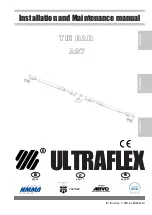
Rebuilding the
Operational Valves
The valves that are used on the Cryo-Cyl models have a spring loaded
rotary stem. This automatically compensates for thermal shrinkage and
wear.
When a defective valve is suspected, follow this procedure to repair it.
Caution
To avoid binding due to freezing at cryogenic temperatures, entry
of moisture into the upper valve stem area must be prevented. Seals,
gaskets and washers must be in good condition and installed carefully and
properly. Torque recommendations must be strictly followed.
1. Referring to Figure I, open valve by turning handwheel
counterclockwise as far as it will go to release any trapped gas in the
system.
Caution
Do not apply force after valve is fully open.
2. Using a screwdriver, remove handwheel screw and washer (Items 3 &
14) by turning counterclockwise to allow removal of spring retainer,
washer, spring, seal washer, seal, handwheel, and bonnet washers (Items
1, 2, 4, 7, 8, 10 and 13). Discard these parts.
3. Using a large adjustable wrench to hold valve body, remove and discard
bonnet (Item 5) by turning counterclockwise with a 15/16" socket
wrench that is capable of developing at least 1000 in/lbs. torque.
4. Remove these parts from the valve body and discard: stem, stem
gasket, seat disc and nipple assembly, and bushing.
5. Inspect body and clean if necessary, be sure interior and seal areas are
free of dirt, residue, and foreign particles.
Caution
Do not scratch or mar internal surfaces of valve.
6-6
180 liter LN2 Supply Tank
Thermo Scientific
Section 6
Service and Maintenance
Disassembly and Repair
Procedure
Disassembly








































